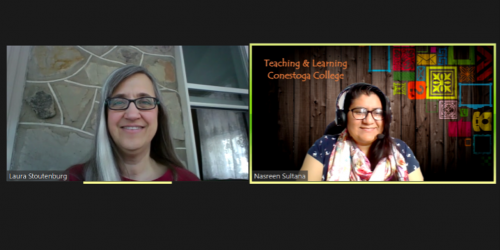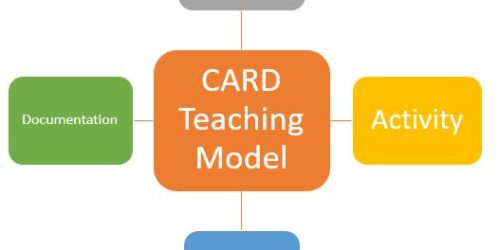
The 10-Minute Countdown: Ensuring Seamless Classroom Wrap-Up
Managing the end of a class efficiently is a crucial skill for any professor, ensuring a smooth transition for the next faculty and maintaining a respectful and organized learning environment. I remember one semester when I was teaching back-to-back classes in different buildings. The rush to wrap up my teaching and make it to the next class on time was always a challenge. Those final ten minutes became a critical period for me to summarize key points, address student questions, and prepare the room for the next professor.
In this hub post, we will explore practical tips and strategies to help you wind down your class seamlessly, ensuring you leave the room on time and ready for the next professor to step in. For strategies on sharing the classroom as a transitional space as you get set up to teach, as well as managing the excitement and anxiety of starting class, you will find this hub post by Ada Sharpe helpful.
Let us begin with tips to help you plan your lesson and wrap up your classroom teaching session efficiently, ensuring a smooth transition for the next faculty:
- Create a Detailed Lesson Plan: Outline your lesson with specific time allocations for each section. This helps you stay on track and ensures you cover all necessary material without running over. You may use the BOPPPS lesson plan to plan your lesson with specific time allocations.
- Practice your Timing: Rehearse your lesson to have an idea of how long each part takes. This practice can help you make adjustments before the actual class.
- Organize Materials: Have all teaching materials and activities ready and organized before class starts. This way, you are not using some class time to set up and search for materials and activities.
- Time Management: Set a timer to keep you on track for the last 10-15 minutes of class. You could also set a timer for each segment of your lesson. This keeps you aware of the time and helps you adjust your pace as needed. Allocate a specific time for questions and answers and stick to it. Here is a hub post by Lauren Spring on how to manage time and pace classroom teaching activities.
- Incorporate Buffer Time: Include a few minutes of buffer time in your lesson plan. This allows for unexpected delays or extended discussions without affecting the overall schedule.
- Engage Students Efficiently: Plan interactive activities that are time-bound. For example, limit group discussions or Q&A sessions to a specific number of minutes.
- Use Visual Aids: Visual aids like slides or handouts can help you stay on track. They provide a clear structure and can serve as a visual cue for transitioning between topics.
- Clear Signals: Verbal cues can assist you in managing your classroom time. You can clearly announce when the class is about to end. Visual cues can also be useful in helping you manage time in online and in-person classes. Use visual aids like a countdown timer on the screen where you and your students can clearly see how much time is left for the class.
There are a few times when your teaching is going really smoothly, students are engaging, and the class interaction is so interesting; boom…… you suddenly find out that you have limited time remaining! If you realize that you are running out of time during class, here are some strategies you can use to ensure you are not causing delays for the next professor coming to teach in the same class:
Prioritize Key Points:
- Quickly summarize the most important points of the lecture.
- Emphasize any critical information that students need to know before the next class.
Follow-Up Communication:
- Send an email to the class with the remaining content or important notes.
- Post additional materials or explanations on the course’s online platform (eConestoga).
Office Hours:
- Invite students to visit during office hours for further clarification.
- If possible, schedule an additional session or extend office hours temporarily.
Assignments:
- Point out the assigned readings which discuss the missed content.
- Provide homework or practice problems related to the unfinished material.
Next Class:
- Start the next class with a brief review of the unfinished content.
- Adjust the lesson plan to ensure all critical topics are covered.
Student Feedback:
- Ask students if there are specific areas they need more help with.
- Use feedback forms to understand what students found unclear or rushed.
As you are winding down the last few minutes of your class, remember to:
- Communicate with and remind students about the importance of leaving the classroom on time. Any other discussions they have with you can go on outside the classroom.
- Properly shut down technology equipment and/or handed over to the next faculty. Have a backup plan in case of technical issues.
- Ensure all materials are quickly packed up and the board is clean.
References
How do I manage my time effectively as a teacher? bok_guide_managingtime.pdf (harvard.edu)
Stachowiak, B. (2020). How to Keep Class Sessions from Running Short (Or Going Too Long). Retrieved from How to Keep Class Sessions from Running Short (Or Going Too Long) | EdSurge News. This article is part of the collection Toward Better Teaching: Office Hours With Bonni Stachowiak.
Tips for Time Management: Tips for Time Management – Center for Teaching Excellence | University of South Carolina (sc.edu)
*Copilot assisted in generating ideas for the title of this Hub post.






